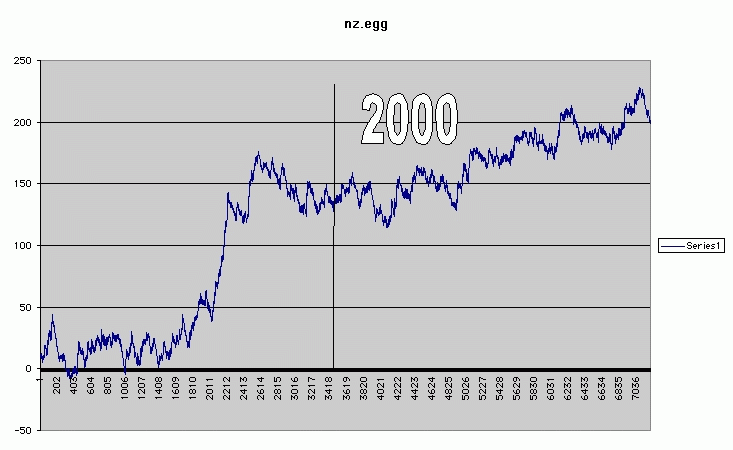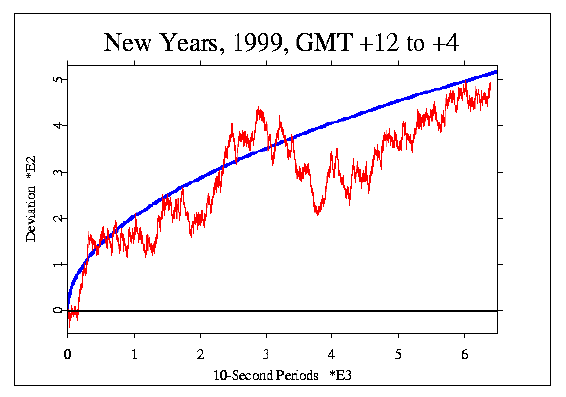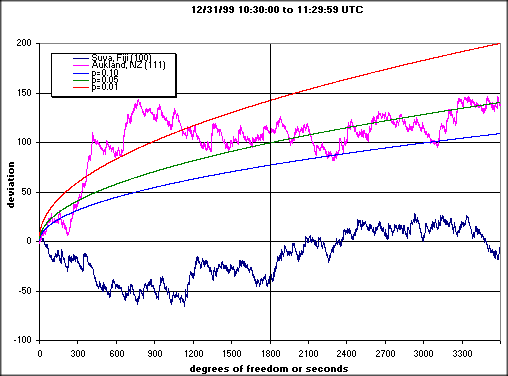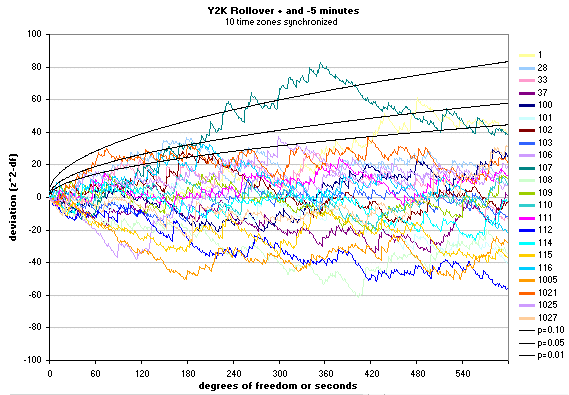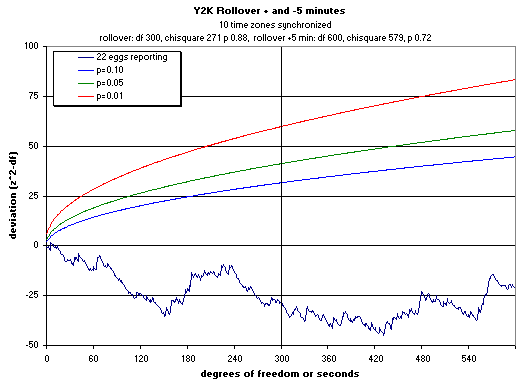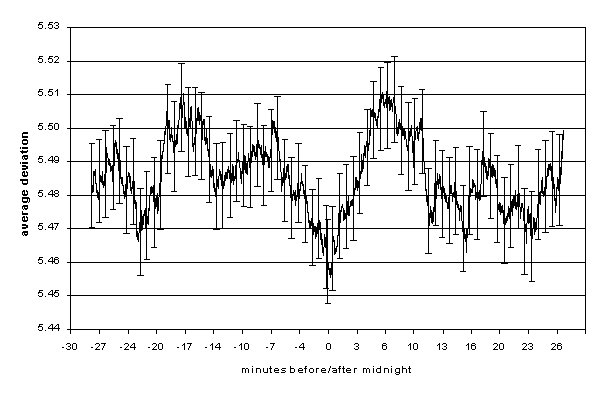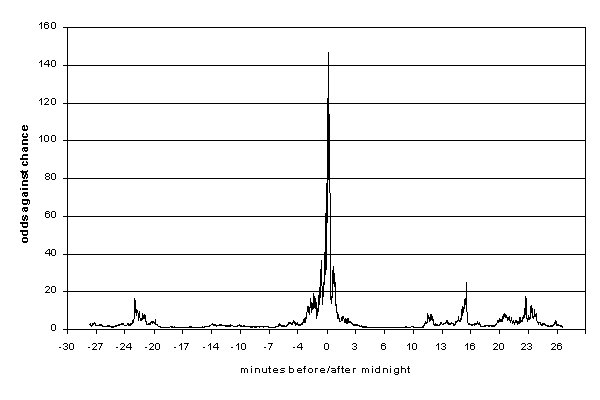The combined deviation drops precipitously as midnight approaches, and
deviates by 3.662 (or as much as 3.85)
Sigma at three seconds before midnight, the
moment of transition.
Deviation of normalized variance, GCP Data, Y2K
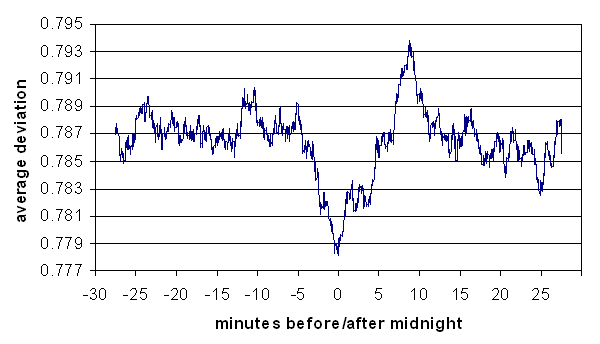
Kurtosis Measure, Z-score format, GCP Data around Midnight, Y2K
Other explorations using a related kurtosis measure (X = e^-kurt)
yield similar results, buttressed by an extensive permutation analysis
and application of the procedures to data from 1, 2, and 15 days
after the Y2K transition. The following figures display these results.
Please note that there remain some problems in the graphs as presented.
Although the shape and relative scaling of the different datasets is valid,
the "Z-scores" are over-estimated because the data are not normally
distributed. The correct Z-scores would be a little more than half as large as
indicated on the scale, and the extreme minimum at midnight would have, according
to later, corrected analyses, a Z-score between -3.5 and -3.8, corresponding to
an odds ratio on the order of 1000 or 10000 to 1.
In addition, the validity of these analyses
is disputed because they consider only 24
integer timezones, rather than the 36 that actually exist when all the
half-hour and 45-minute offset timezones are included. We do not have
available the corresponding figures with data at all 36 midnights, but hope to
be able to provide them later. The 36-zone analysis is said to show no effect,
in contrast to the present 24-zone analysis, which indicates a hugely
significant effect.
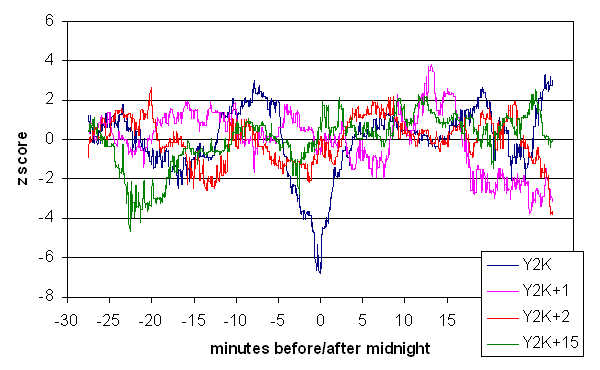
Log Odds Against Chance, GCP Data at Midnight, Y2K and Controls
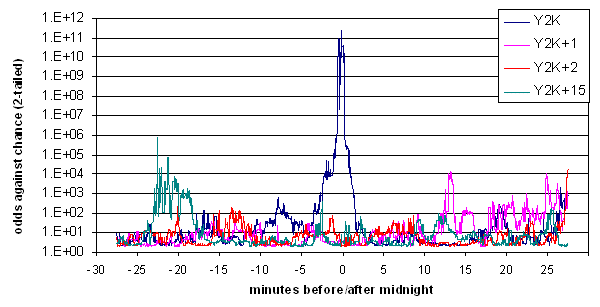
Z-score, Kurtosis measure, GCP Data, New Years, 1998
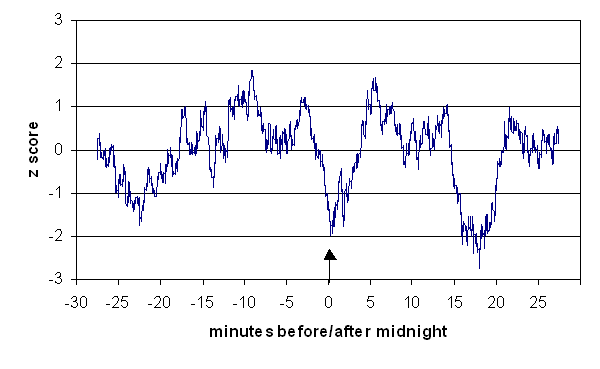
An earlier version of the analysis used similar smoothing, but a complex
score involving median values of averaged deviations. It led to the
kurtosis measure, which in turn led to the simpler variance procedure
presented in the formal analysis. These exploratory figures are of
interest because they also show that the data are different from
expectation around midnight, using a methodology that is quite distinct.

Using the same data, the next figure
shows the likelihood of extreme excursions of median values in
blocked average absolute deviations of the EGG data from chance
expectation as an odds ratio; see the
description
for a full explanation of the procedure.
Odds Against Chance, GCP Data at Midnight, Y2K and Controls
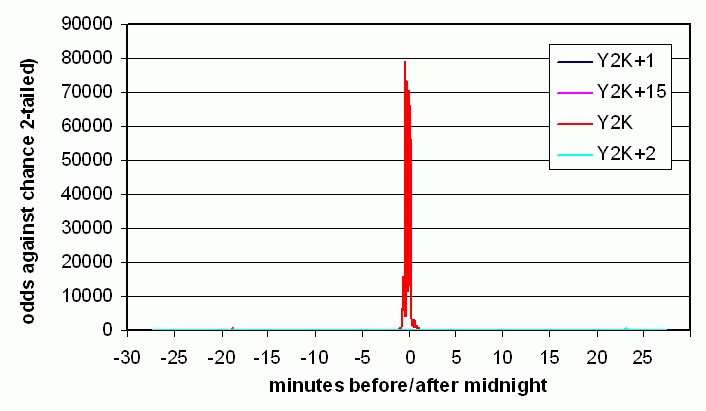
The spike at midnight in the Y2K trace is so extreme
that other variations are too small to be examined in a linearly scaled
presentation. A log scale for the
odds ratio allows the details to be visualized.
The odds for the Y2K data are consistently large around midnight plus or
minus a few minutes, and peak within seconds of the transitional moment.
For the control days, the odds during this period are
about equally often smaller and larger than 1/1.
Log Odds Against Chance, GCP Data at Midnight, Y2K and Controls
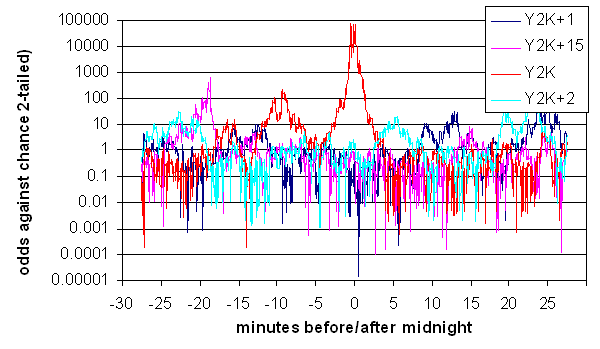
Difference Between High and Low Population Time Zones, Y2K
In another exploration using the absolute deviation approach to the
data, Dean examined the split between data from time zones with
low and high populations. A complete description
of this refinement details the procedure. Two figures show the average median
absolute deviation for the two population densities, and the difference between the
two data categories. The figures show a strong focus at midnight, with the maximum
difference at nine seconds before the Y2K transition.
The hypothesis, again, is that all eggs would respond to the stroke-of-midnight moment
of coherence, but this analysis examines the further hypothesis that there
should be different "amounts" of coherence created as each timezone passed midnight,
given that the world's population is not distributed uniformly.
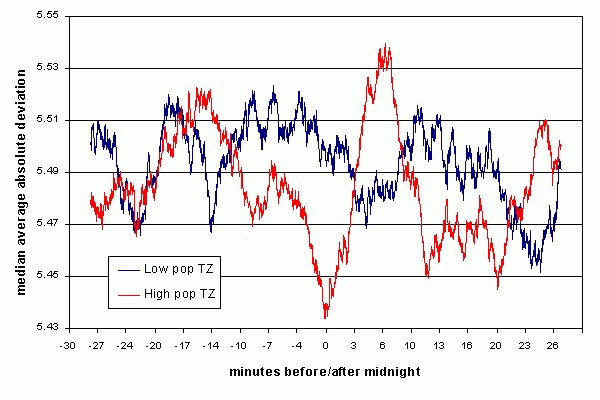
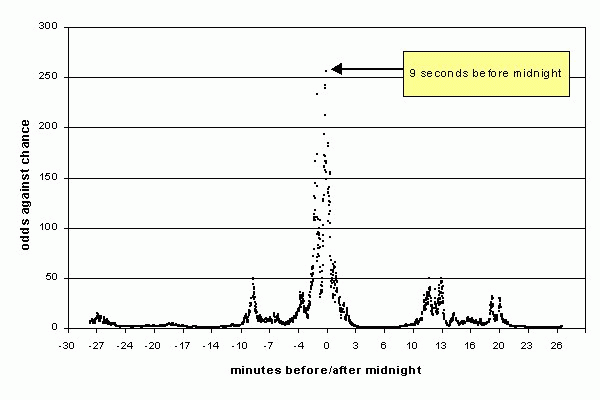
Afterword, on interpretation, RDN
These results, and some others in the GCP database, have generated considerable
commentary, and among the alternative explanations which are offered is the
suggestion that it may all be an "experimenter effect." This is not meant as a
suggestion that there is anything wrong with the machines, or the protocols, but as an
interpretation that the source of the effect is not some sort of global consciousness,
but the intentions, the consciousness of the experimenters. I mentioned this concern
to a sage I know and she said, "So what? We can all be experimenters."
That made me laugh a lot, for it does so succinctly put the
point that a real effect in this stuff is meaningful, even
if it doesn't mean what we might have wished,
or what we imagined we could show.
Return to top
GCP Home
